In this article, we will discuss the importance of effective mold remediation methods and how they can contribute to a safer home environment. Many homeowners are unaware of the potential dangers associated with mold growth, including health risks and property damage. Promptly addressing mold problems with professional mold removal services is crucial for mitigating these risks and ensuring a healthy living space.
In the following sections, we will explore the various options available for mold remediation, the process for removing mold, and how to prevent its recurrence. We will also provide tips and strategies for identifying mold infestations, DIY mold remediation, and maintaining a mold-free environment. By understanding how to properly address mold problems, homeowners can safeguard their health and property while enjoying a safe and comfortable living space.
Understanding Mold Growth and Risks
Mold is a type of fungus that thrives in damp and humid environments. It can grow on various surfaces, including walls, ceilings, carpets, and furniture. Mold spores are present in the air we breathe, but they only become a problem when they land on a surface with excess moisture. Without proper intervention, mold can spread quickly and pose health risks to occupants of a home.
What are the Risks of Mold?
Mold growth can cause a variety of health problems, such as respiratory issues, allergies, and skin irritation. Prolonged exposure to mold can also lead to more severe health issues, including asthma and other respiratory diseases. In addition to health risks, mold can cause significant damage to homes and properties, leading to costly repairs.
Why is Mold Inspection and Remediation Important?
Mold inspection and remediation services are crucial in identifying and addressing mold problems in homes. These professionals use specialized equipment to detect mold growth and determine the best course of action to eliminate the mold. Proper mold remediation ensures that all spores are removed and prevents mold from returning. This helps to safeguard the health of occupants and maintain the structural integrity of the property.
How to Choose the Best Mold Remediation Company
| Factor to Consider | Explanation |
|---|---|
| Certification | Look for a company that is certified in mold remediation and follows industry standards. |
| Experience | Choose a company with several years of experience in the industry. This ensures they have the knowledge and expertise to handle any mold issue. |
| Reputation | Research the company’s reputation by reading reviews and asking for references. A reputable company will have positive feedback from satisfied customers. |
| Pricing | Get quotes from several companies and choose one that offers a fair price for quality services. Avoid companies that offer extremely low prices, as this may indicate subpar work. |
By considering these factors, homeowners can ensure that they choose the best mold remediation company for their needs.
Professional Mold Removal Services
Mold remediation can be a complex and challenging process, requiring specialized skills and equipment to ensure safe and effective removal. That’s why hiring professional mold removal services is often the best solution for homeowners facing a mold problem.
Professional mold removal companies have the expertise and certification to handle mold remediation safely and effectively. They use a range of expert techniques, including air filtration systems, negative air pressure, and specialized cleaning solutions, to remove mold from your home and prevent its recurrence.
| Certification | Benefits |
|---|---|
| Certified mold remediation specialists | Ensures safe and effective removal |
| Expert techniques and equipment | Effective removal and prevention of mold |
| Proper disposal of mold-contaminated materials | Reduces the risk of spreading mold spores |
When selecting a professional mold removal company, it’s essential to choose a company with proper certification and experience. Look for companies with certifications such as the Institute of Inspection Cleaning and Restoration Certification (IICRC) or the National Organization of Remediators and Mold Inspectors (NORMI).
Expert mold remediation techniques can provide long-lasting and cost-effective solutions for mold, ensuring that you and your family can live in a healthy and safe environment. Professional mold removal services are often the best option for homeowners to tackle mold problems promptly and effectively.
Mold Remediation Process
Effective mold remediation involves a systematic process to ensure thorough removal of mold and prevention of its recurrence. Here are the typical steps involved in the mold remediation process:
| Step | Description |
|---|---|
| 1 | Inspection: A professional mold remediation service provider inspects the affected area to determine the extent of the mold infestation and identify potential causes of mold growth. |
| 2 | Containment: The affected area is contained to prevent the spread of mold spores to other parts of the building. This involves sealing off the area and using negative air pressure to ensure that mold spores are not released into the air. |
| 3 | Removal: Mold is removed from affected surfaces using specialized equipment and professional-grade cleaning agents. Porous materials, such as drywall or carpeting, may need to be removed and replaced. |
| 4 | Drying: The affected area is thoroughly dried to prevent further mold growth. |
| 5 | Prevention: To prevent mold from recurring, the root cause of the mold infestation is identified and addressed. This may involve fixing plumbing leaks, improving ventilation, or reducing humidity levels. |
| 6 | Cleanup: The affected area is cleaned up and any debris or contaminated materials are properly disposed of. |
| 7 | Verification: A final inspection is conducted to ensure that all mold has been removed and the affected area is safe for occupancy. |
It is important to note that the mold remediation process may vary depending on the extent of the mold infestation and specific circumstances of the affected area.
In addition to remediation, it is essential to implement preventative measures to ensure long-term mold control and prevention. This may include affordable mold remediation options and ongoing moisture prevention practices. By taking a proactive approach to mold remediation and prevention, homeowners can ensure a safe and healthy living environment for their families.
Identifying Mold Infestations
Mold can grow in various parts of a house, including the bathroom, kitchen, basement, and attic. It can also grow in less visible areas like inside walls and ceilings. As mold spores are tiny and often invisible to the naked eye, it can be challenging to detect mold growth until it becomes a serious issue.
However, there are common signs that homeowners can look out for to identify a mold infestation:
- A musty odor in the house
- Visible mold growth on surfaces like walls, ceilings, and floors
- Water damage or discoloration on walls or ceilings
- Frequent respiratory or allergy symptoms
- Unexplained headaches or fatigue
If you notice any of these signs in your home, it is essential to address the issue promptly to prevent the mold from spreading and causing further damage to your property and health.
Beware of Hidden Mold
It’s also important to remember that mold can grow in hidden areas like inside walls, under carpets, and in air ducts. As such, it’s recommended that homeowners schedule regular mold inspections to check for any hidden mold infestations that may be present.
DIY Mold Remediation Tips
While professional mold removal services are recommended for more severe cases of mold infestation, minor mold problems can often be addressed through DIY methods. Here are some tips for safe and effective DIY mold remediation:
-
Safety First: Before beginning any mold removal process, wear protective gear such as gloves, goggles and a mask to avoid exposure to mold spores.
-
Mold Inspection: Identify the affected areas and the extent of the mold growth. If the mold covers more than 10 square feet, it’s best to contact a professional mold remediation service for safe and effective removal.
-
Moisture Control: Address the source of moisture that caused the mold growth, such as a leaking pipe. Without proper moisture control, mold is likely to return even after remediation.
-
Cleaning Products: Use effective cleaning products such as bleach or hydrogen peroxide to remove visible mold growth. Be sure to follow the instructions on the product label and test on a small area first to avoid damage to surfaces.
-
Proper Disposal: After cleaning, dispose of any contaminated materials such as rags or cleaning cloths in a sealed bag to prevent spreading of mold spores.
-
Airflow: Ensure proper ventilation to aid in drying out the area. Open windows and use fans to increase air circulation.
Remember that DIY mold remediation is only recommended for small and isolated areas of mold growth. For larger or more severe cases, it’s best to seek the assistance of a certified mold remediation professional.
Common Mold-Prone Areas in Homes
Mold can appear in various areas of a home, particularly in damp or humid areas. Knowing where mold is most likely to grow can help you identify and address the issue early. Here are some common mold-prone areas in homes:
| Area | Reason for Mold Growth |
|---|---|
| Bathrooms | High humidity levels due to showering and bathing |
| Kitchens | Accumulation of moisture from cooking and washing dishes |
| Basements | Dampness due to poor ventilation and water leaks |
| Attics | Insufficient ventilation leading to the buildup of moisture |
While mold can grow in other areas of a home as well, these are the most common ones. If you notice any signs of mold growth in these areas, it’s important to address the issue promptly to prevent further damage to your home and your health.
Importance of Proper Ventilation and Moisture Control
Proper ventilation and moisture control are critical in preventing mold growth in homes. Mold thrives in damp, humid conditions, making it essential to keep indoor moisture levels low and ventilation systems functioning correctly.
Regularly checking and maintaining household appliances, such as air conditioning units and dehumidifiers, can help ensure proper ventilation and humidity levels. It is also crucial to promptly repair any leaks or water damage and to maintain proper airflow in bathrooms and kitchens to prevent moisture buildup.
Effective Moisture Prevention Measures
| Prevention Measures | Description |
|---|---|
| Adequate Ventilation | Properly functioning fans, vents, and windows promote good air circulation and prevent moisture buildup. |
| Regular Cleaning | Cleaning and drying surfaces regularly can help prevent mold growth in areas prone to moisture buildup, such as bathrooms and kitchens. |
| Waterproofing | Waterproofing products can be applied to surfaces such as walls, floors, and ceilings to prevent moisture penetration and reduce the risk of mold growth. |
| Humidity Control | Using dehumidifiers, air conditioning, and ventilation systems can help maintain optimal indoor humidity levels and prevent moisture buildup. |
By implementing these moisture prevention measures and maintaining proper ventilation, homeowners can significantly reduce the risk of mold growth in their homes. However, if mold growth does occur, it is essential to address the issue promptly and effectively through professional mold remediation services.
Choosing the Right Mold Remediation Company
When it comes to mold remediation, it’s crucial to hire a reliable and qualified professional to ensure effective and safe results. Here are some factors to consider when choosing the right mold remediation company:
- Experience: Look for a company with years of experience in the industry. They should have a proven track record of successfully resolving mold issues.
- Certification: Ensure that the company has proper certifications and licenses required for mold remediation services. This confirms their competence and compliance with industry standards.
- Reputation: Check online reviews, testimonials, and references to gauge the company’s reputation and customer satisfaction. Beware of suspiciously high ratings or a lack of feedback.
- Pricing: Compare the quotes and services provided by different mold remediation companies. Beware of unusually low prices, as it may compromise the quality of work and use of proper equipment.
By considering these factors, you can choose a reliable and trustworthy mold remediation company that meets your specific needs.
Health Risks Associated with Mold Exposure
Mold is a serious issue that should not be ignored. Exposure to mold can cause a range of health problems, from minor allergies to severe respiratory issues. Here are some of the health risks associated with mold exposure:
- Allergic reactions, such as sneezing, runny nose, and itchy skin
- Asthma attacks, especially in individuals with a history of asthma
- Upper respiratory tract infections, such as bronchitis and pneumonia
- Headaches and migraines
- Fatigue and weakness
- Memory loss and difficulty concentrating
- Depression and anxiety
Individuals with weakened immune systems, such as children, the elderly, and those with chronic health conditions, are more susceptible to the health risks associated with mold exposure.
It is important to address mold problems promptly to safeguard the health and well-being of household members. By investing in effective mold remediation methods, individuals can eliminate the risk of exposure to mold and its associated health risks.
Section 11: Maintaining a Mold-Free Environment
After remediation, it is essential to maintain a mold-free environment to prevent future infestations. Here are some practical tips for achieving this:
- Regular inspections: Ensure you inspect your home regularly, especially areas prone to mold growth, such as bathrooms, attics, and basements. Check for signs of moisture, leaks, and discoloration that may indicate the growth of mold.
- Proper cleaning techniques: To keep your home mold-free, ensure you clean and dry any wet surfaces or materials promptly. Use effective cleaning products and ensure you dry any surfaces thoroughly to prevent moisture buildup.
- Ongoing moisture prevention practices: Moisture is a significant contributor to mold growth, so it is vital to take measures to prevent it. These may include using dehumidifiers, repairing leaks, improving ventilation, and ensuring proper drainage around your home.
By practicing these tips regularly, you can maintain a mold-free environment and protect your home and health from the adverse effects of mold growth.
Frequently Asked Questions (FAQs)
As a homeowner, you may have several questions about effective mold remediation and prevention. Here are some of the most commonly asked questions that can help you better understand the process and ensure a safer home environment:
Q: What causes mold growth in homes?
A: Mold grows in areas with high humidity levels and moisture. Common causes of mold growth in homes include leaks in pipes or roofs, poor ventilation, and flooding.
Q: How can I tell if there is mold in my home?
A: Signs of mold growth include a musty odor, discoloration on walls or ceilings, and respiratory symptoms such as coughing and wheezing. A mold inspection can confirm the presence and extent of mold growth.
Q: Can I remove mold myself?
A: Minor mold problems can be addressed through DIY methods, but larger infestations require professional mold removal services. It’s essential to wear protective gear and use appropriate cleaning solutions to avoid spreading mold spores.
Q: How long does the mold removal process take?
A: The time required for mold remediation depends on the size and scope of the mold infestation. Small, contained mold problems can often be resolved in a day, while larger infestations may require several days or longer to complete.
Q: How much does mold remediation cost?
A: The cost of mold remediation varies depending on the extent of the infestation and the services required. On average, the cost ranges from $500 to $6,000 or more. It’s essential to obtain multiple quotes from certified mold remediation companies to ensure fair pricing.
Q: How can I prevent mold growth in my home?
A: Preventing mold growth requires maintaining optimal humidity levels, fixing leaks promptly, improving ventilation, and using mold-resistant materials in areas prone to moisture. Regular inspections and cleaning can also help prevent mold growth.
By understanding effective mold remediation and prevention practices, you can keep your home safe and maintain a mold-free environment.









